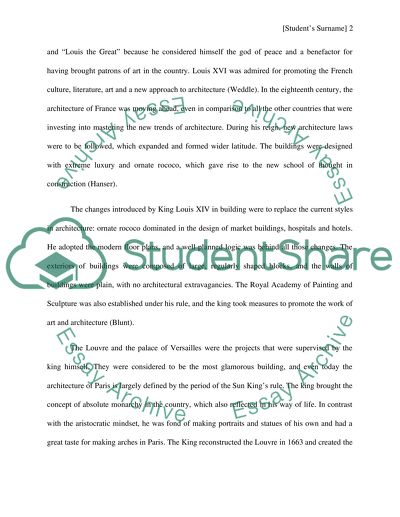Cite this document
(“How does King Louis XIV's History Reflect Through Buildings, Arches, Research Paper”, n.d.)
Retrieved from https://studentshare.org/history/1458704-how-does-king-louis-xivs-history-reflect-through-buildings-arches-and-statues-in-paris
Retrieved from https://studentshare.org/history/1458704-how-does-king-louis-xivs-history-reflect-through-buildings-arches-and-statues-in-paris
(How Does King Louis XIV'S History Reflect Through Buildings, Arches, Research Paper)
https://studentshare.org/history/1458704-how-does-king-louis-xivs-history-reflect-through-buildings-arches-and-statues-in-paris.
https://studentshare.org/history/1458704-how-does-king-louis-xivs-history-reflect-through-buildings-arches-and-statues-in-paris.
“How Does King Louis XIV'S History Reflect Through Buildings, Arches, Research Paper”, n.d. https://studentshare.org/history/1458704-how-does-king-louis-xivs-history-reflect-through-buildings-arches-and-statues-in-paris.


